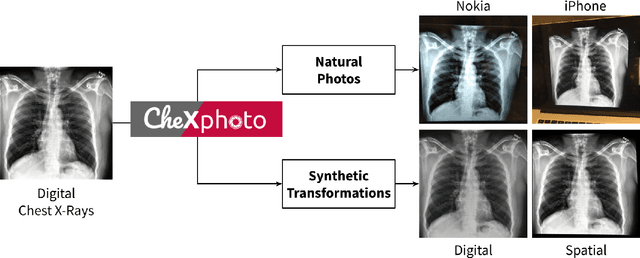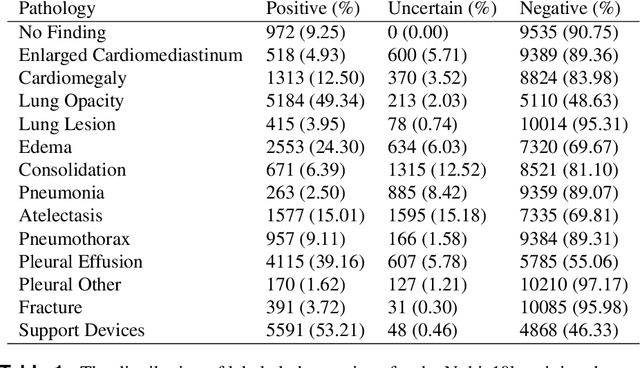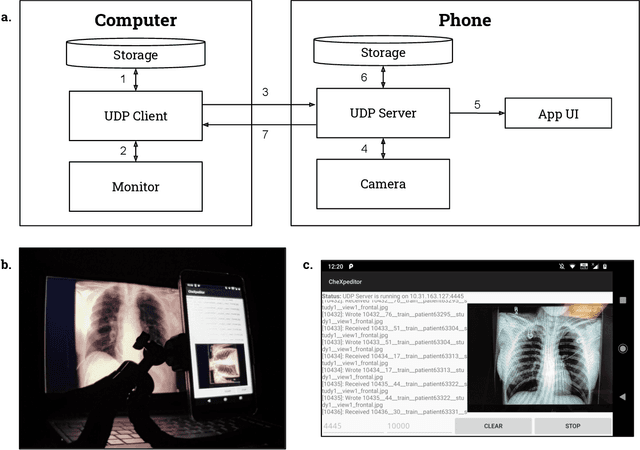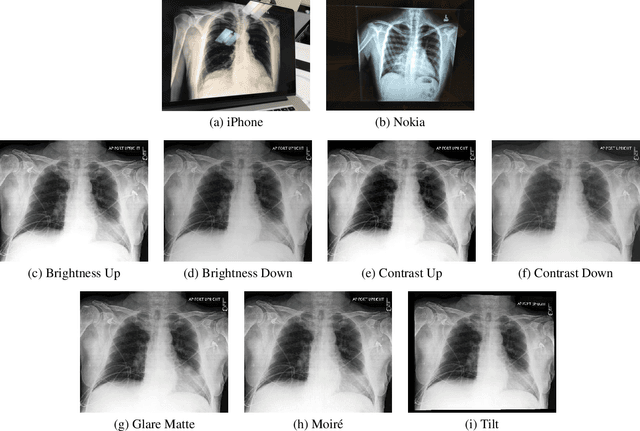Mark Sabini
CheXphoto: 10,000+ Smartphone Photos and Synthetic Photographic Transformations of Chest X-rays for Benchmarking Deep Learning Robustness
Jul 13, 2020



Abstract:Clinical deployment of deep learning algorithms for chest x-ray interpretation requires a solution that can integrate into the vast spectrum of clinical workflows across the world. An appealing solution to scaled deployment is to leverage the existing ubiquity of smartphones: in several parts of the world, clinicians and radiologists capture photos of chest x-rays to share with other experts or clinicians via smartphone using messaging services like WhatsApp. However, the application of chest x-ray algorithms to photos of chest x-rays requires reliable classification in the presence of smartphone photo artifacts such as screen glare and poor viewing angle not typically encountered on digital x-rays used to train machine learning models. We introduce CheXphoto, a dataset of smartphone photos and synthetic photographic transformations of chest x-rays sampled from the CheXpert dataset. To generate CheXphoto we (1) automatically and manually captured photos of digital x-rays under different settings, including various lighting conditions and locations, and, (2) generated synthetic transformations of digital x-rays targeted to make them look like photos of digital x-rays and x-ray films. We release this dataset as a resource for testing and improving the robustness of deep learning algorithms for automated chest x-ray interpretation on smartphone photos of chest x-rays.
Painting Outside the Box: Image Outpainting with GANs
Aug 25, 2018



Abstract:The challenging task of image outpainting (extrapolation) has received comparatively little attention in relation to its cousin, image inpainting (completion). Accordingly, we present a deep learning approach based on Iizuka et al. for adversarially training a network to hallucinate past image boundaries. We use a three-phase training schedule to stably train a DCGAN architecture on a subset of the Places365 dataset. In line with Iizuka et al., we also use local discriminators to enhance the quality of our output. Once trained, our model is able to outpaint $128 \times 128$ color images relatively realistically, thus allowing for recursive outpainting. Our results show that deep learning approaches to image outpainting are both feasible and promising.
 Add to Chrome
Add to Chrome Add to Firefox
Add to Firefox Add to Edge
Add to Edge